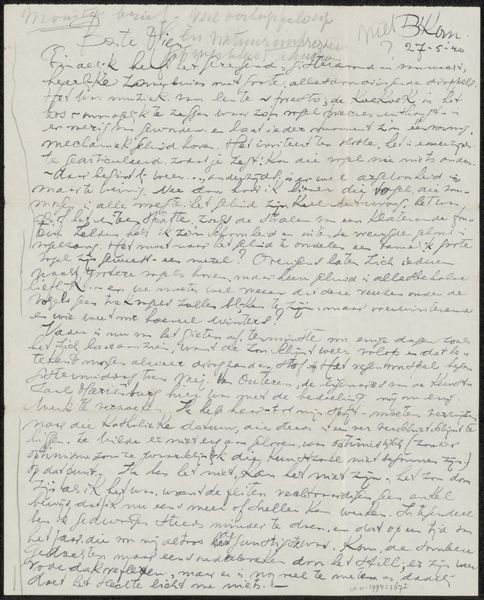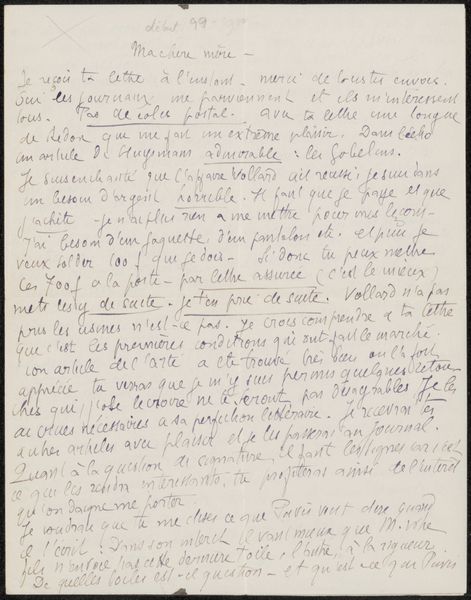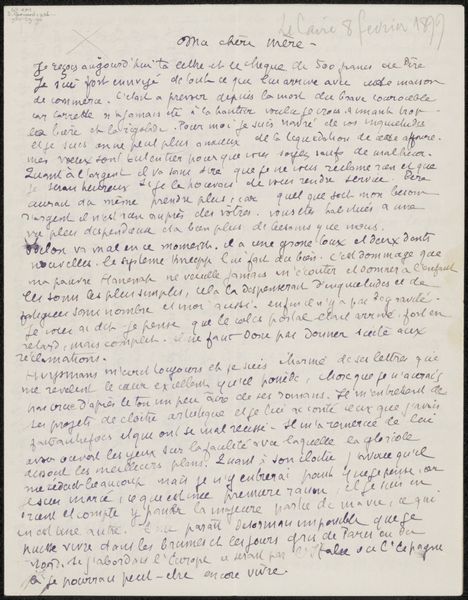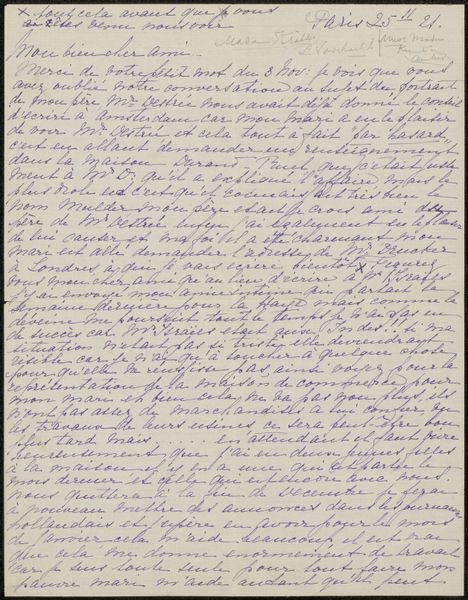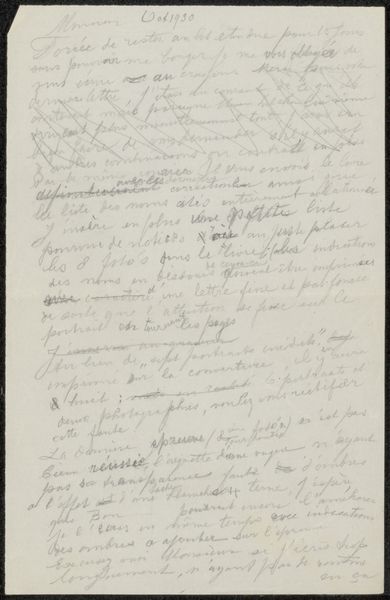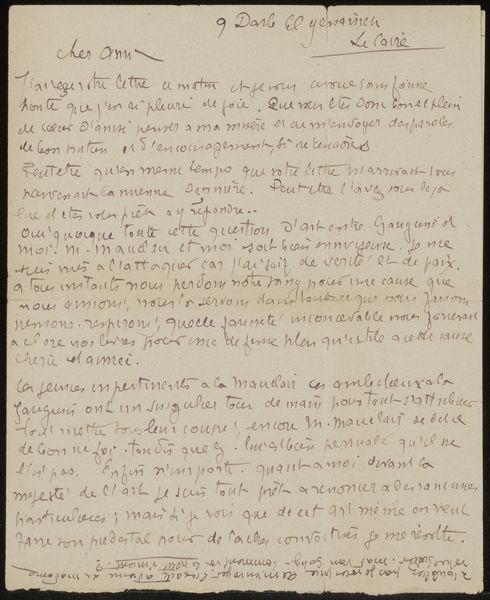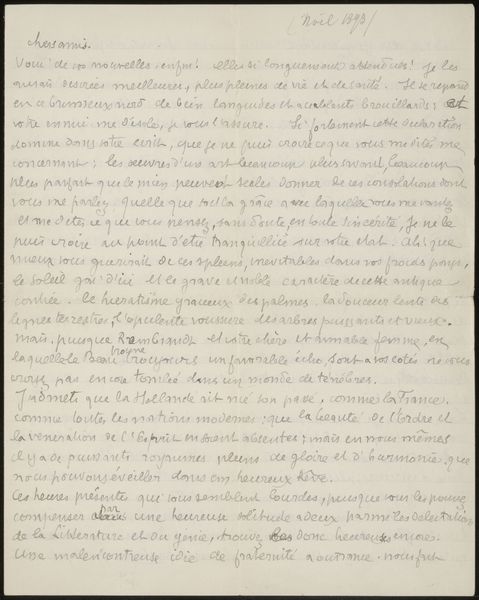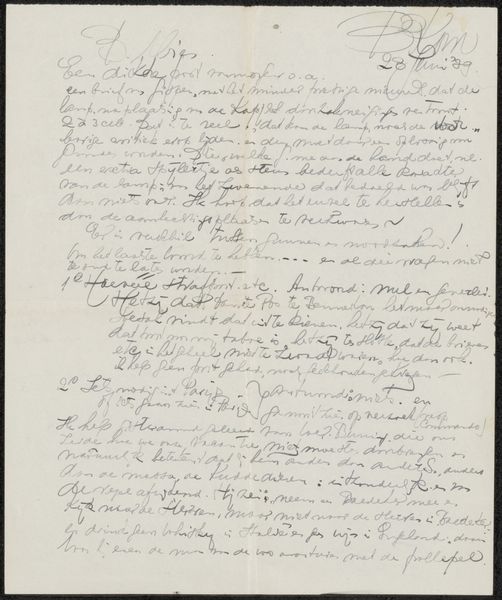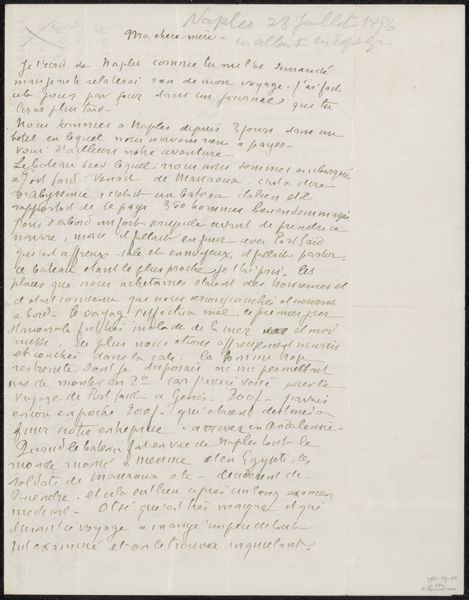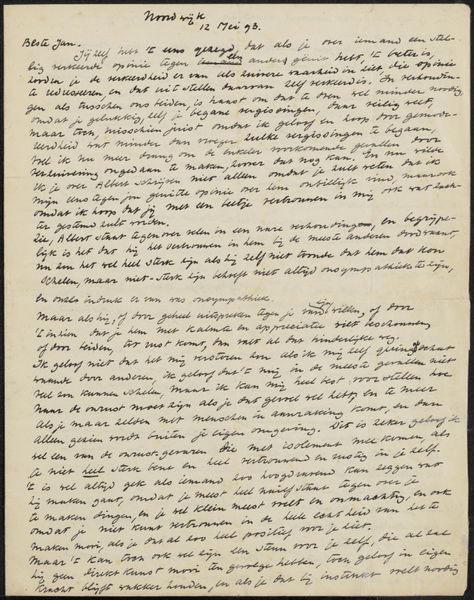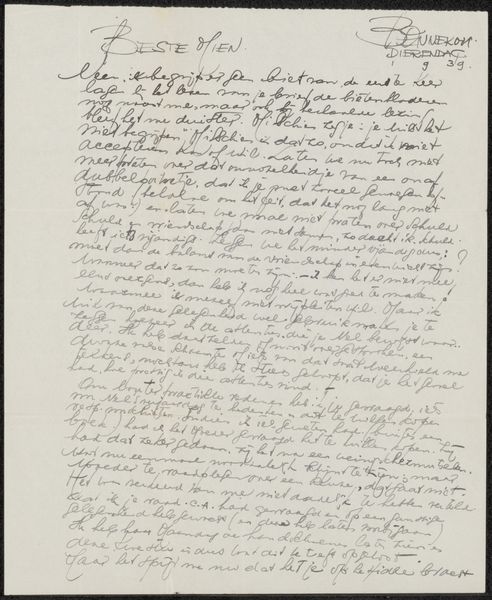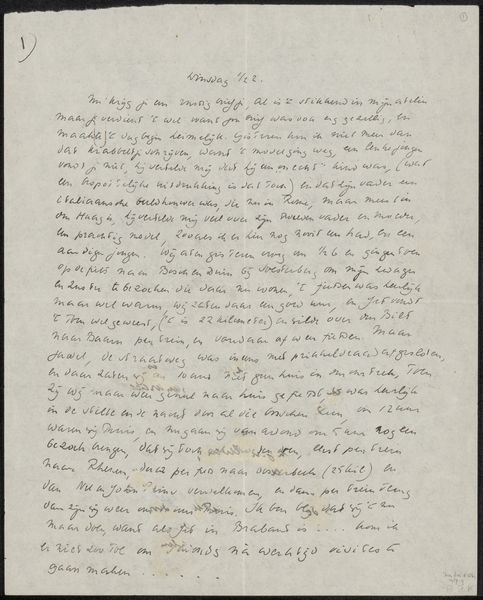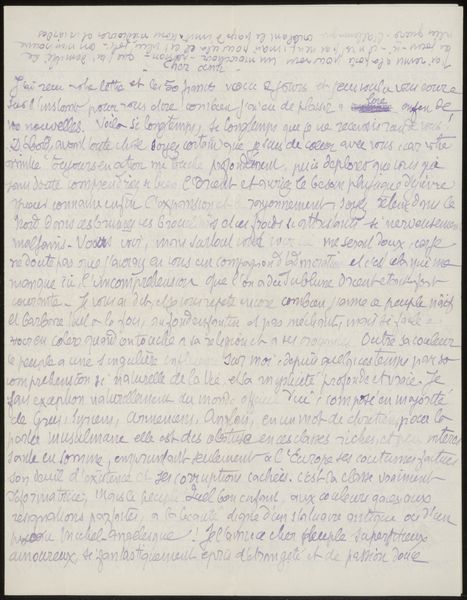
drawing, paper, ink, pen
#
drawing
#
paper
#
ink
#
pen
Copyright: Rijks Museum: Open Domain
Editor: This looks like a letter from Émile Bernard to Andries Bonger. Penned in ink on paper, probably before 1899, its handwritten script creates an intimate mood. It seems almost like eavesdropping on a personal conversation. What can you tell me about its significance, seeing it today? Curator: As an object, this letter allows us a privileged glimpse into the artistic and intellectual circles of the late 19th century. It's more than just personal correspondence; it's a document reflecting the cultural anxieties and artistic debates of its time. Bernard's reference to societal expectations and Bourgeois comfort provides context to the avant-garde art movements of the era. Does the act of physically writing a letter change how we look at it, compared to, say, an email? Editor: Absolutely, seeing the actual handwriting adds another layer of understanding. It underscores the tangible human connection that might get lost in digital communications. Do you think Bernard might have seen the act of writing itself as a form of artistic expression, too? Curator: That's insightful. The care in crafting phrases and the allusions to poetry definitely suggests that the letter functions as a space where personal and artistic reflections intertwine. For artists operating in the margins, letter-writing can be a political act, offering both an opportunity to record their truths and build community against isolation. Thinking about Bernard’s social context also encourages reflection on how privilege affects freedom of artistic expression. Editor: So it's both a personal artifact and a political document? Curator: Precisely! It serves as a record of interpersonal dynamics, yes, but it is also a commentary on broader power structures in the art world. It invites us to reflect on who gets to be remembered, whose voices are amplified, and who's on the margins, even in intimate correspondence. Editor: It really puts the art world in a whole new, more nuanced context. Curator: It allows a deeper, empathetic conversation.
Comments
No comments
Be the first to comment and join the conversation on the ultimate creative platform.
